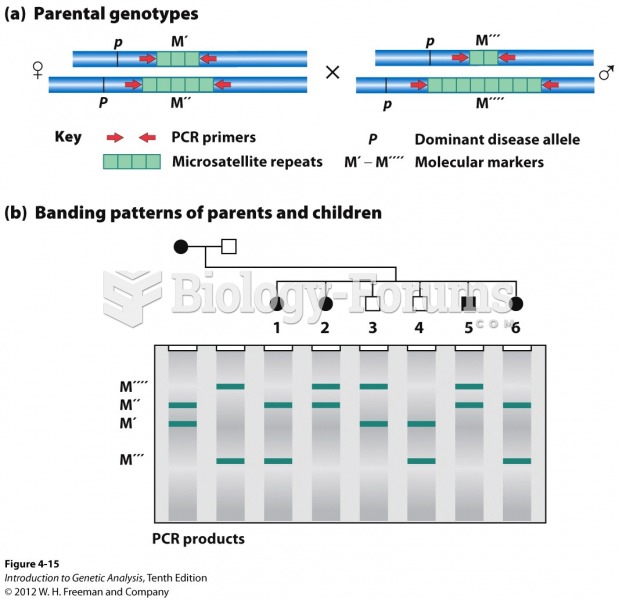Answer to Question 1
Dementia is a term used across the neurocognitive and neurodegenerative disorders to describe the memory impairment and declining cognitive functioning resulting from degenerative brain conditions. Dementia produces such severe memory impairments that social, occupational, and self-care functioning drop significantly from prior levels. Many people with dementia show poor judgment and act impulsively. The onset of dementia is usually gradual; its effects are widespread and chronic, and they involve gradual cognitive deterioration. Age is the best studied and the strongest risk factor for dementia. The longer a person lives, the greater the chance of developing dementia.
Alzheimer's disease is the most prevalent neurodegenerative disorder and is the sixth leading cause of death in the United States. The onset of Alzheimer's disease is insidious and characterized by progressive decline in cognitive, physical, and social functioning. Early signs of the disease are memory loss, irritability, and cognitive impairment, which gradually worsen over time. In addition to intellectual impairments, people with Alzheimer's gradually become withdrawn, depressed, apathetic, delusional, and neglectful of personal hygiene. Memory loss moves from forgetting appointments and how to get home to forgetting who they and relatives are. There is no cure for Alzheimer's disease, those with this diagnosis survive about half as long as those of similar age without dementia, and those with slower rates of cognitive decline are more likely to survive longer than those with sharp decreases in cognitive functioning. Alzheimer's disease involves the formation of senile plaques (patches of degenerated nerve endings) as well as neurofibrillary tangles (abnormal, tangled mats of brain tissue filaments). It is hypothesized that these plaques cause oxidative injury, inflammation, and alterations in neurotransmitters which in-turn cause neuron death and significant brain atrophy. The etiology of Alzheimer's disease is believed to be a product of hereditary and environmental factors. Several genes have been associated with the incidence of Alzheimer's however the exact role of these genes is not known. A gene that increases risk for later-onset of Alzheimer's disease is the APOE e4 gene, and those with this gene have a 25 increased likelihood of developing Alzheimer's. Twin studies have identified that the heritability for Alzheimer's is high, and that environmental influence should be the target of interventions to reduce risk and delay the onset of the disease. Protective factors include a healthy cardiovascular system, physical fitness, eating a healthy diet may help slow the progression and reduce risk of Alzheimer's and other disorders involving dementia. Use of anti-inflammatory drugs may slow the accumulation of proteins implicated in Alzheimer's disease.
Answer to Question 2
DSM-5 indicates three categories of neurocognitive disorders: major neurocognitive disorder, mild neurocognitive disorder, and delirium. With each disorder the underlying medical circumstances causing the disorder is known. Neurocognitive disorders may be due to a specific medical condition, a substance-induced condition, or may result from multiple etiologies.
Major neurocognitive disorder involves deficits in one or more cognitive areas/domains (e.g., complex attention, decision making and judgment, learning and memory, visual perception, or social skills and behavior) and the degree of ability to independently meet the demands of daily living. Observation, interviews, and psychological or neuropsychological testing are utilized to identify skills that are impaired or lower than would be expected based on a person's age, gender, education, culture, and degree of functioning prior to symptoms.
Mild neurocognitive disorder also involves deficits in at least one major cognitive areas/domains, however the degree of severity is lesser than that seen in major neurocognitive disorder. Individuals with this disorder may struggle with familiar tasks or engage in compensatory strategies to function accordingly. Extra effort may be needed to function day to day, however overall independent functioning is not compromised as with major neurocognitive disorder. Overall, the main distinction between major and mild neurocognitive disorder is the severity of cognitive decline and decline in independent functioning. It is common for an individual to be first diagnosed with a mild neurocognitive disorder and as time passes and symptoms intensify an individual could be reassessed and diagnosed with major neurocognitive disorder.
The primary distinctions of delirium from major and mild neurocognitive disorders are that it is an acute state of confusion or cognitive impairment as well as its having a fluctuating course. Delirium is also characterized by diminished awareness, disorientation, and impaired attention skills. Delirium often develops rapidly (e.g. hours or days) and symptoms range from mild to severe. These symptoms can include impaired orientation, disorganized patterns of thinking, and psychotic symptoms (e.g. delusions, hallucinations). Delirium is common and treatment for this disorder involves determining the underlying cause of the delirium which could include conditions such as high fever, dehydration, intoxication, or brain changes associated with a neurocognitive disorder. Delirium can present in the context of a minor or major neurocognitive disorder or it can present independently from these disorders.







